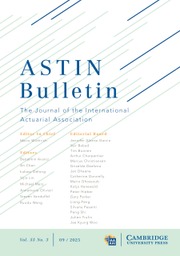Article contents
A discipline for the avoidance of unnecessary assumptions 1
Published online by Cambridge University Press: 29 August 2014
Extract
Although unnecessary assumptions are something we all try to avoid, advice on how to do so is much harder to come by than admonition. The most widely quoted dictum on the subject, often referred to by writers on philosophy as “Ockham's razor” and attributed generally to William of Ockham, states “Entia non sunt multiplicanda praeter necessitatem”. (Entities are not to be multiplied without necessity.) As pointed out in reference [I], however, the authenticity of this attribution is questionable.
The same reference mentions Newton's essentially similar statement in his Principia Mathematica of 1726. Hume [3] is credited by Tribus [2c] with pointing out in 1740 that the problem of statistical inference is to find an assignment of probabilities that “uses the available information and leaves the mind unbiased with respect to what is not known.” The difficulty is that often our data are incomplete and we do not know how to create an intelligible interpretation without filling in some gaps. Assumptions, like sin, are much more easily condemned than avoided.
In the author's opinion, important results have been achieved in recent years toward solving the problem of how best to utilize data that might heretofore have been regarded as inadequate. The approach taken and the relevance of this work to certain actuarial problems will now be discussed.
Bias and Prejudice
One type of unnecessary assumption lies in the supposition that a given estimator is unbiased when in fact it has a bias. We need not discuss this aspect of our subject at length here since what we might consider the scalar case of the general problem is well covered in textbooks and papers on sampling theory. Suffice it to say that an estimator is said to be biased if its expected value differs by an incalculable degree from the quantity being estimated. Such differences can arise either through faulty procedures of data collection or through use of biased mathematical formulas. It should be realized that biased formulas and procedures are not necessarily improper when their variance, when added to the bias, is sufficiently small as to yield a mean square error lower than the variance of an alternative, unbiased estimator.
Information
- Type
- Research Article
- Information
- Copyright
- Copyright © International Actuarial Association 1971
Footnotes
Originally presented at the seminar on Mathematical Theory of Risk and allied topics, auspices of the Committee on Mathematical Theory of Risk, Casualty Actuarial Society, November 16, 1966.
References
- 3
- Cited by

